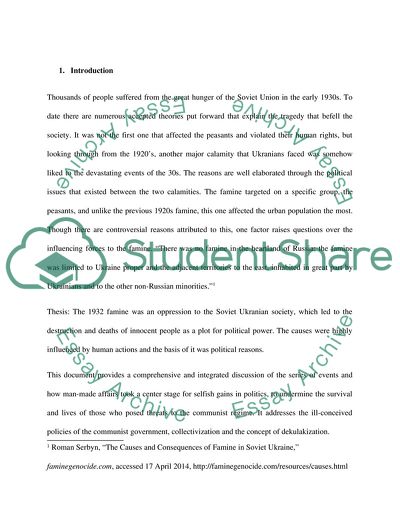Cite this document
(The Soviet Union Famine of 1932 Case Study Example | Topics and Well Written Essays - 3000 words, n.d.)
The Soviet Union Famine of 1932 Case Study Example | Topics and Well Written Essays - 3000 words. https://studentshare.org/history/1820906-the-soviet-union-famine-of-1932
The Soviet Union Famine of 1932 Case Study Example | Topics and Well Written Essays - 3000 words. https://studentshare.org/history/1820906-the-soviet-union-famine-of-1932
(The Soviet Union Famine of 1932 Case Study Example | Topics and Well Written Essays - 3000 Words)
The Soviet Union Famine of 1932 Case Study Example | Topics and Well Written Essays - 3000 Words. https://studentshare.org/history/1820906-the-soviet-union-famine-of-1932.
The Soviet Union Famine of 1932 Case Study Example | Topics and Well Written Essays - 3000 Words. https://studentshare.org/history/1820906-the-soviet-union-famine-of-1932.
“The Soviet Union Famine of 1932 Case Study Example | Topics and Well Written Essays - 3000 Words”. https://studentshare.org/history/1820906-the-soviet-union-famine-of-1932.


